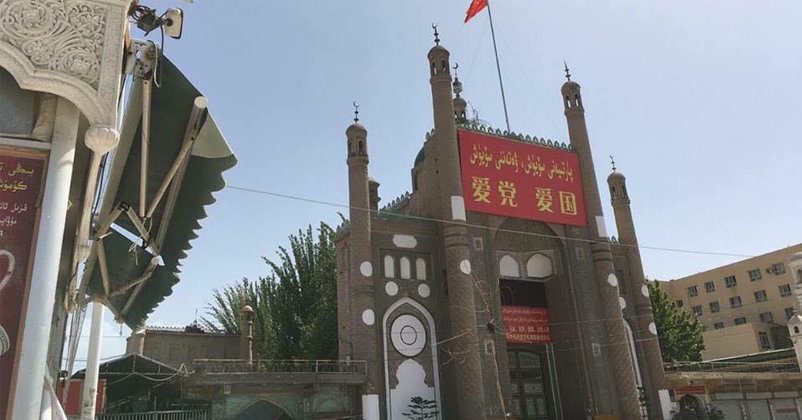(Not) Shocking! Public Toilet constructed on demolished Mosque site in China's Xinjiang
| 17-Aug-2020 |

In what seems as a part of some campaign aimed at hurting the sentiments of the Uyghur Muslims according to some observers, a public toilet has been reportedly erected on the site of a demolished mosque in Atush city of China that lies in northwest China’s Xinjiang Uyghur Autonomous Region (XUAR), as per a local official.
Reports of the construction of the restroom on the demolished Tokul mosque in Atush city of China come days after RFA’s Uyghur Service learned that authorities had razed two of three mosques there, in a drive launched in late 2016 known as “Mosque Rectification” to destroy Muslim places of worship.
The Mosque Rectification drive, part of a series of forceful policies under Chinese President Xi Jinping predates the mass incarceration of as many as 1.8 million Uyghurs and other Muslim minorities in its internment camps across Xinjiang province since April 2017.
In a telephonic interview with RFA (Radio Free Asia) agency, an Uyghur neighborhood committee chief from Suntagh village in Atush said that Tokul Mosque was torn down in 2018 and the public washroom was erected in its place by “Han (Chinese) comrades.”
Some revelations by residents of Suntagh, busting China’s scandalous actions
The Committee Chief when asked if there was any need to construct a public washroom in the community said that “people have toilets at home so there were not any problems like that.” He added that Suntagh is around 3 kms outside of central Atush and the area sees few to no tourists who might need access to the lavatory.
According to the Committee Chief, as he told RFA, “the public toilet was likely built to cover up the ruins of the demolished Tokul Mosque as well as for the need of inspecting groups or cadres visiting the area.” Another resident of Suntagh, who refused to be identified said that one of the two mosques in the village were razed in or around autumn of 2019. He said, “Azna Mosque had been replaced with a convenience store that sells alcohol and cigarettes, both of which are forbidden in Islam.”
Earlier, a public security officer in Suntagh confirmed that Azna Mosque and Bastaggam Mosque had been destroyed, while the mosque authorities left standing, Teres mosque was the smallest and in the poorest condition of all three.
According to a report in 2016, a local official in Hotan’s prefecture’s Lop county (Luopu) reported that authorities were planning to use the site of a former Mosque to open an activity centre, as a spot for entertainment. Another official in Hotan city’s Illchi township told RFA that “a former mosque site would be converted into a factory to produce underwear for a Sichuan based company.”
China has been targeting the holy sites across Xinjiang since 2016
In addition to Mosques, Chinese authorities have been systematically destroying Muslim cemeteries and other religious structures and sites across Xinjiang province since 2016.
An investigation by Agence France-Presse revealed that at least 45 cemeteries in the XUAR had been destroyed from 2014 until last October, with 30 razed since 2017. The sites were turned into parks or parking lots or remained empty lots.
Last year, Washington based Uyghur Human Rights Project (UHRP) published report titled “Demolishing faith: The destruction and desecration of Uyghurs Mosques and Shrines” said that the campaign uses geolocation and other techniques and has led to the destruction of between 10,000 to 15,000 mosques, shrines and other religious sites in the region between 2016 and 2019.
Qahar Barat, an Uyghur historian, recently told RFA that the demolition of religious places in Xinjiang constitutes a kind of “spirit breaking”. He called on the Government and Muslim Organisations around the world to take stern action against China’s scandalous activities, which he described as a “declaration of war on Islam.”